No Such Thing as "Off-Season"
When the seasons change and the temperature drops, Michigan residents everywhere swap out their SUP boards and water skis for more climate-appropriate snowboards and cross-country skis. The first snowfall signals that summer (and the coveted “local’s summer”) has officially come to an end, and the warm weather sports are put on hiatus until spring.
For some Michiganders, that is.
For the thrill-seekers, freezing temps and frigid lakes present an entirely new set of adventure opportunities. Whether they’re camping, surfing or kiting across Lake Michigan— these daring locals refuse to throw in the towel. We sat down with some of our M22 family who are pioneering their craft and proving that even in the dead of winter, there is no such thing as an off-season.
Chandler Hansen
Chandler Hansen (@chandlerhansen_) is no stranger to cold-water surfing and has chased endless waves in all four seasons. Riding winter swells presents a unique set of challenges, and Chandler has all the tips and tricks for anyone curious about what it takes to hit the lake, no matter the conditions.
First and foremost, how do you motivate yourself to get outside and go surfing in the wintertime? Does your crew have any pre-surfing rituals to help hype you guys up when it’s freezing out?
I think the pure love I have for surfing is what gets me going, because I know that when it’s cold, that’s usually when the waves are best. The past couple months, we’ve been traveling all over the Great Lakes to find the best waves. We’ll wake up extremely early, like 4:00 am, to leave for the spot. We always start our morning off with Guns and Roses to wake us up. [My friend] Gianni and I, we just feed off each other’s energy and get stoked. When I know the waves are going to be good, and I know I’m going to be surfing, like, a week in advance…That’s all that’s on my mind. There’s been this whole search for the best wave this past winter, so the cold doesn’t really bother me anymore— I enjoy it.
"That’s kind of the beauty of it; not many people go out for those freezing cold slush sessions. It’s very limited to who really wants it bad enough."
What are some unique challenges you face surfing in the winter as opposed to the summer? Do you find the same amount of surfers out in winter as you do in summer?
There are definitely challenging factors, like changing out of a wetsuit in the cold, little things like that. But I think it’s kind of blissful how peaceful it is out there in the wintertime. It’s a little bit different because there are not as many people out, and half the time, we’re the only people out there. That’s kind of the beauty of it; not many people go out for those freezing cold slush sessions. It’s very limited to who really wants it bad enough. A lot of people just don’t wanna be that cold, and there are obviously risks when the water is that cold.
Proper gear is essential for this kind of activity– what recommendations do you have for other surfers?
I wear a Hyperflex 6/5 wetsuit in the wintertime, and that keeps me extremely warm. People always ask me if I’m cold out there, but the Hyperflex 6/5 keeps me really warm. I always wear wetsocks under my booties, and for my face, I slather some Vaseline on it if it’s really that bad out.
What are your favorite surf spots along M-22? What do you look for in a surf spot around here?
Probably Vans Beach. When we’re searching for waves, we don’t really go to a lot of the normal main beach breaks. We do a lot of hunting, and there are a lot of little spots that I know nobody else will be at. That’s why I love surfing up north— it’s just untouched. If you’re not from the area and you haven’t gone looking for the surf spots, you won’t find them.
Are people ever surprised when you tell them you surf around the Great Lakes?
Yeah, the majority are. A lot of people don’t understand it until I show them pictures; they just kind of assume it’s like surfing behind a boat. They think I’m insane.
Finally, what is one crucial piece of advice you’d offer to beginner surfers– regardless of season?
I think just getting yourself on the board is huge at first. A lot of people are so timid, but once you’re actually on the board, you just kind of fall in love with it. It’s the joy that comes with it— whether it’s a small one-foot wave day or a double overhead day— I’m always happy if I’m in the water and on my surfboard. I want more people to get out there and enjoy the sport because it’s not that well-known around the Great Lakes.
Photos: James Vandermolen (@james.vandermolen) and Hunter Lohman (@hunterlohman_photo)
Adam Osiecki
Adam Osiecki (@adam.osi) is a Michigan native with a love of kiteboarding and foiling the fresh coast. Along the way, he’s developed a knack for kiting in all four seasons and has plenty of tips for novice thrill-seekers looking to do the same.
What initially sparked your interest in kiting?
It was a steady progression of just being in water sports in general. I started off wakeboarding when I was younger, then got into surfing the Great Lakes when I was in high school, surfing around the area in Leland and especially Frankfort. [I was] sitting in the water between sets rolling in and I started seeing these guys kiting, and it just looked like they were having so much more fun. They didn’t have to sit in the water waiting and didn't have to wait for waves to come in. Just the amount of air you can get was super attractive. I had a couple of local buddies in the area that were getting into it around the same time, and I was like, “this is my next thing.”
What got you inspired to kite and foil during the cold season?
It took me a few months to research and get all the gear I wanted, and by that time, it was mid-winter. My buddies had been itching to get out and learn to kite more proficiently, so we started learning on the frozen lake with either snowboards or skis. It’s a great way to learn how to use the kite and learn how everything functions without having to worry about getting up and out of the water. Foiling is a pretty new sport, and it’s been exploding all over the last year. It’s another great way to get out on the water, and in general, it’s a bit safer. You don’t need someone there necessarily to launch and land your kite; you can literally walk off a dock if you wanted to, and you don’t need that 24 feet or so of space to launch your kite.
Which do you prefer, kiteboarding or kitefoiling?
Foiling is super attractive to me because it’s much more free. When the wind conditions are not as consistent, like more gusty and not very good to kite in, that’s the best time to go out and foil because it’s much easier to manage. I could also see there being a bit more longevity with foiling too. It’s not as taxing as kiteboarding where you’re doing like 30-foot jumps and landing— your knees can really take a beating. With foiling, you’re literally just gliding through the water. There’s no vibration, just silence, and it’s one of the best feelings. I’ve been really addicted to foiling because it’s something new, I’m progressing every single day, and there’s always something to get better at.
"There's no bad weather, only bad gear."
What disadvantages come with kiting and foiling during wintertime?
When the temperature gets below freezing, that’s kind of the cut-off for kiteboarding. Your kite lines will freeze up, and if you drop the kite in the water and bring it back up in the air, the kite will start sheeting with ice. So as long as the temps are a bit above freezing, you’re able to go. Then when it freezes again, and there’s snow on the ground, you can go out on the frozen lakes or go in the field and have all the fun you want.
Tell us about the necessary gear you need to get yourself out there in the freezing temps.
The expression goes, “there’s no bad weather, only bad gear,” so as long as you’re prepared when it gets cold— wearing thicker wetsuits with hoods, gloves, booties, and sometimes even stacking a couple wetsuits on top of each other just to stay warm. As long as you have the right gear, you can still have the most fun.
What advantages do you feel kiters have in northern Michigan/freshwater as opposed to ocean kiting? Which do you prefer?
Freshwater is preferred over all to me. In salt water, you really should be rinsing off your gear after every session. Salt can really wear down and degrade the materials and hardware that go into a lot of your gear. Salt water does have advantages as it’s a little more dense, so it's easier to create buoyancy. I’ve heard foiling in salt water is more efficient— it’s easier to get up on the foil and glide, whereas in freshwater, you don’t have as much buoyancy. But I mean, I would much rather be in crystal clear water you can drink and not have to worry about taking a shower afterward.
Lastly, where is your crew’s favorite spot to go kiting along M-22?
Vans Beach in Leland. At Vans Beach, and Michigan in general, we’re getting these westerly winds all summer. I have half a dozen buddies that all live in the area, and at any given time, if the wind is up, at least the majority of them will be down to go. We have all kind of situated ourselves in life to have a little more freedom and are fortunate enough to be able to get out and go whenever the wind is up. At any given time when there’s a good northwest to north wind, the waves will be amazing, and there will be around a dozen surfers and kiters out there just making the most of it. It’s not only a good spot for wind, but it’s just a beautiful location. You’ve got both the islands in the background; you can see Whaleback and Pyramid Point off in the distance when you’re getting out in the water, and it’s just beautiful.
Drew Mason
Drew Mason (@drewmason) makes the most out of northern Michigan’s unforgiving winters by getting outside and setting up camp. We asked Drew to share his secrets on how to stay warm, dry, and most importantly, stoked during the time of year when getting outside and staying outside is a challenge in itself.
What initially sparked your interest in winter camping?
Having been camping and backpacking most of my life, it was a fun challenge for myself that was close to home. If you think about what makes backpacking challenging, it usually involves big mountains and hiking long distances. Without committing the time to do long distances and without having mountains in Michigan, camping in the winter became a fun way to challenge myself and take the next step in an activity that I was already familiar with and make it unfamiliar.
Tent camping is vastly different in the winter as opposed to summer. What key differences do beginners need to be prepared for when setting up camp?
There’s no denying that winter camping is more challenging than warm-weather camping. If you’re packing all of your stuff in, like backpacking style, the weight of the pack is something to consider. You have to think about what you’re bringing, and it’s kind of a game of comfort versus weight. A lot of state parks and private campgrounds aren’t open in the winter, so the kind of camping where you pull up and park your car in your little square and have neighbors all around, that’s usually not available. The kind of camping that I like to do is dispersed camping along the North Country Trail. You have to walk your stuff in, so you need a nice, big backpack. One thing people may not consider when winter camping is that the days can be really short. So, sometimes it’s 5:30, and it’s already nighttime. Bring extra batteries for your headlamp!
"When there’s a fresh snowfall, there are fewer ways to better feel the silence of winter than when you’re out in the woods and the snow just kind of dampens the noise."
What gear recommendations for winter specifically do you have for those interested in getting started? What are your tricks for staying warm?
I have a 20-degree down sleeping bag that I use in the spring, fall, and winter. If I need to, I’ll add additional layers; I also have a 40-degree down sleeping quilt. Between the 20 and the 40, it’s pretty warm. I’ll double up on the quilts, and I also double up on sleeping pads on the bottom. I have an accordion-style, fold-out foam sleeping pad, and I also have an inflatable sleeping pad as well. I almost always camp with my dog, and when it comes to staying warm, having my dog in my sleeping quilt with me generates so much heat at night. I joke that he’s my warmest piece of winter gear. One of my favorite recent gear purchases for winter camping specifically was a pair of really nice winter boots by Soloman that aren’t heavy and have great waterproofing. You can get really nice winter boots that are great, but they tend to weigh a lot.
What are some of the advantages of winter camping?
A lot of the more popular camping spots in the summer get really busy. On a Saturday, it can be really hard to find a fun place to camp, especially in the more “wilderness” or “backcountry” camping areas, like in the Manistee National Forest or along the North Country Trail. In the winter, you have the whole place to yourself, and that’s why I like it so much. One of my favorite things about winter camping is being able to camp without the busyness of summer. When there’s a fresh snowfall, there are fewer ways to better feel the silence of winter than when you’re out in the woods and the snow just kind of dampens the noise. It’s a unique feeling, to be out in the woods with all this fresh powder, and it sounds so quiet. It’s a really fun thing.
Adventure comes in many forms— some with cold extremities, insane ice beards, and gorgeous snow-covered landscapes. Our M22 community continues to prove that in northern Michigan, there truly is no off-season.
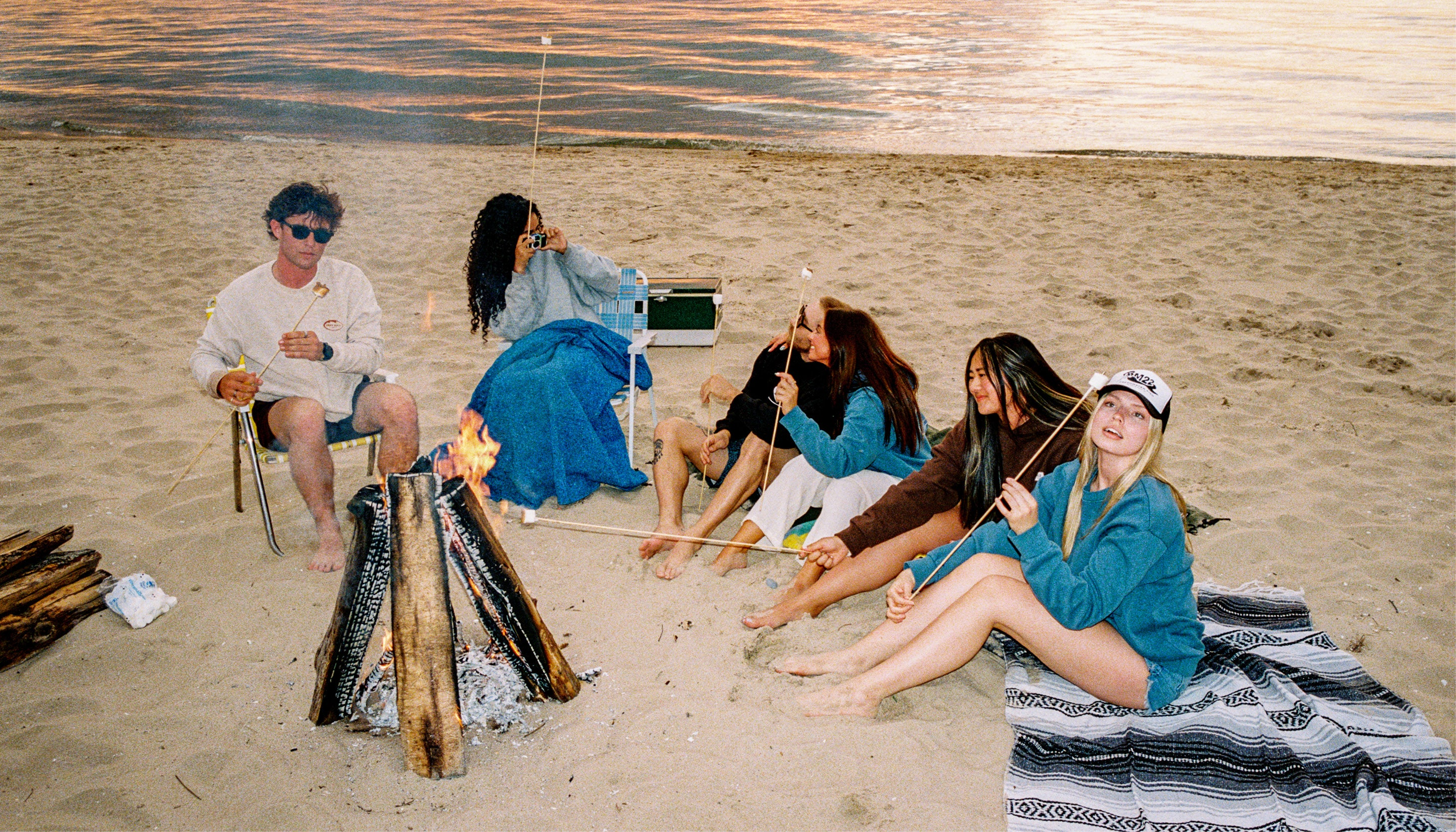
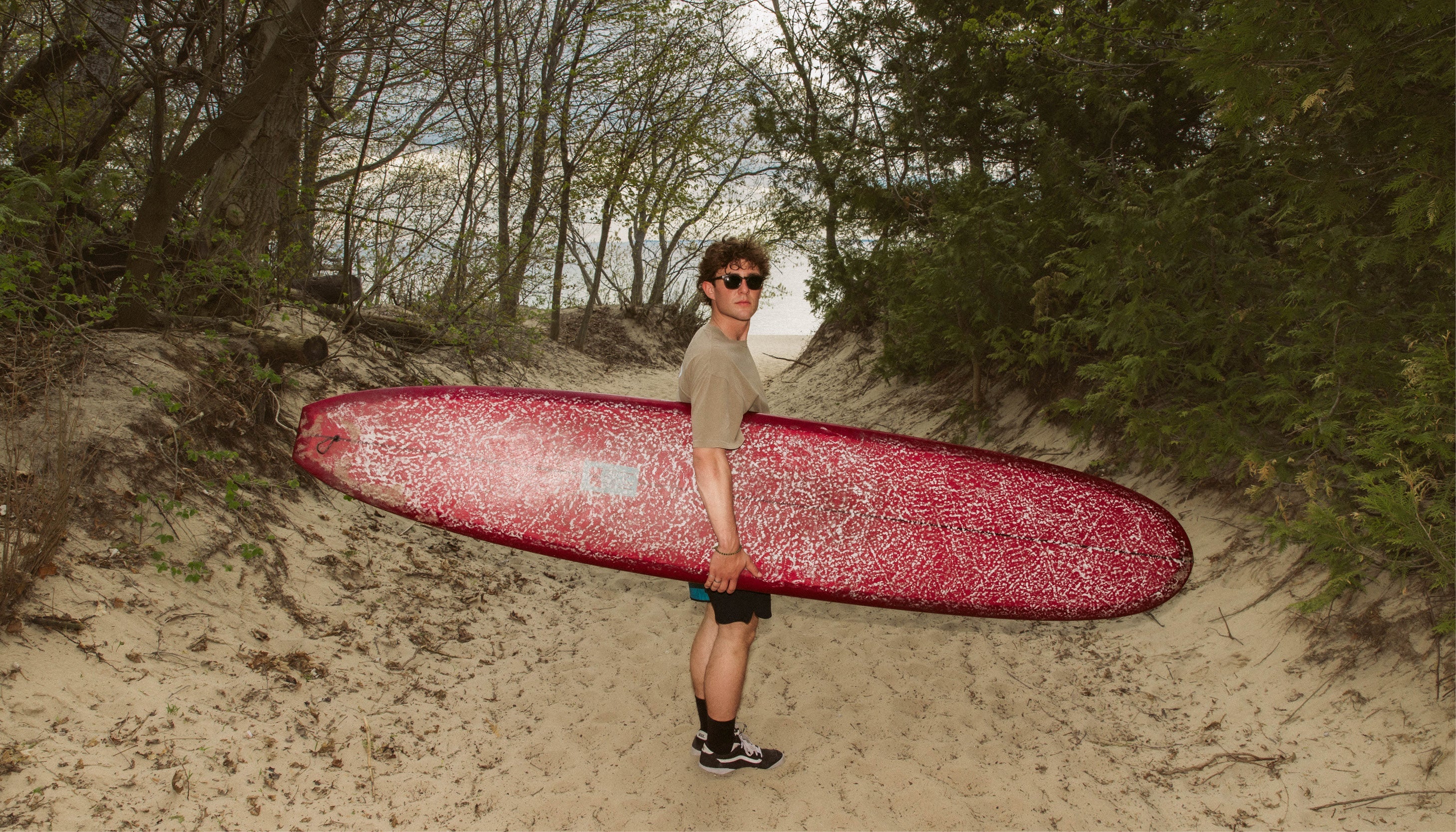
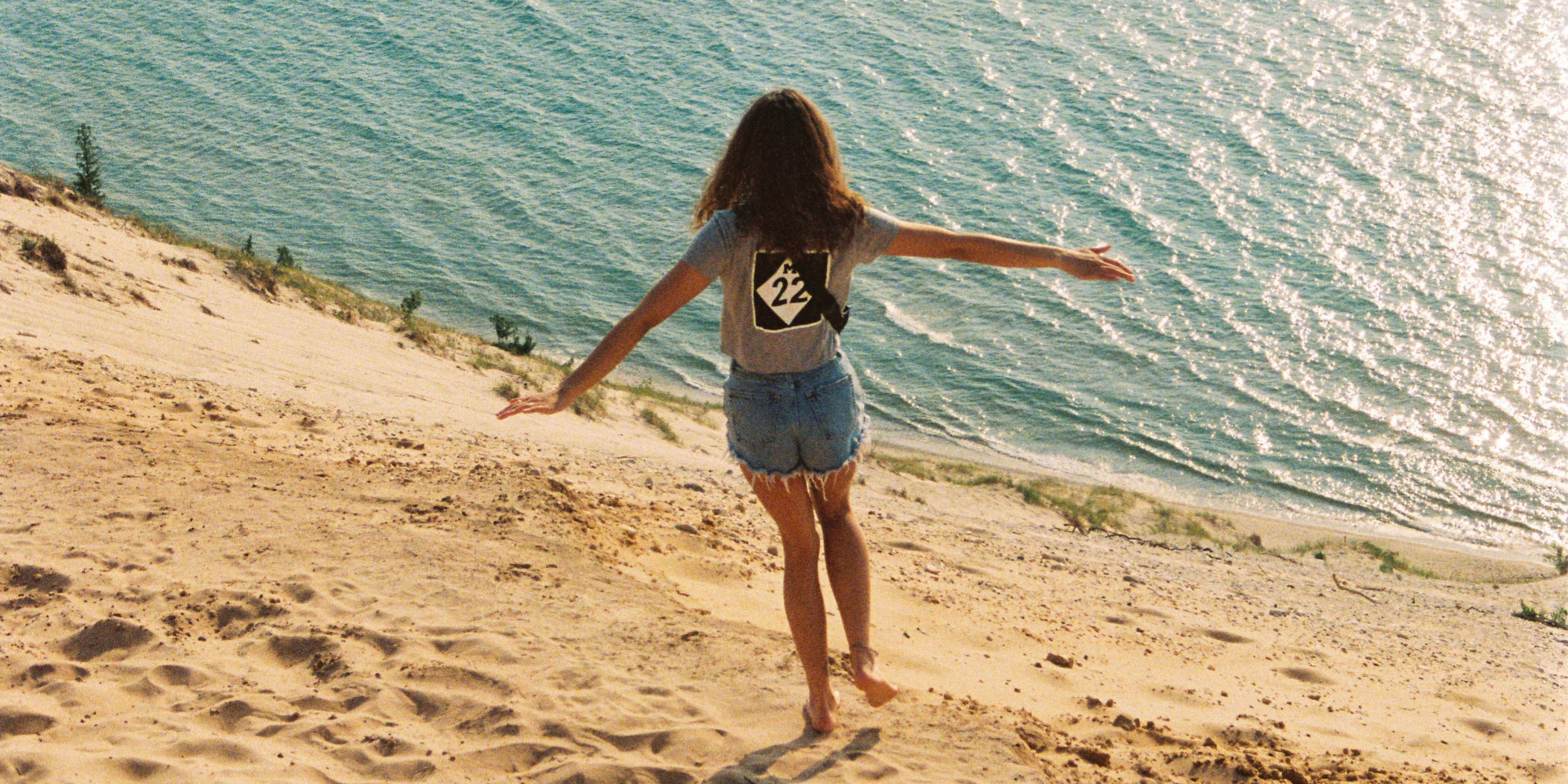
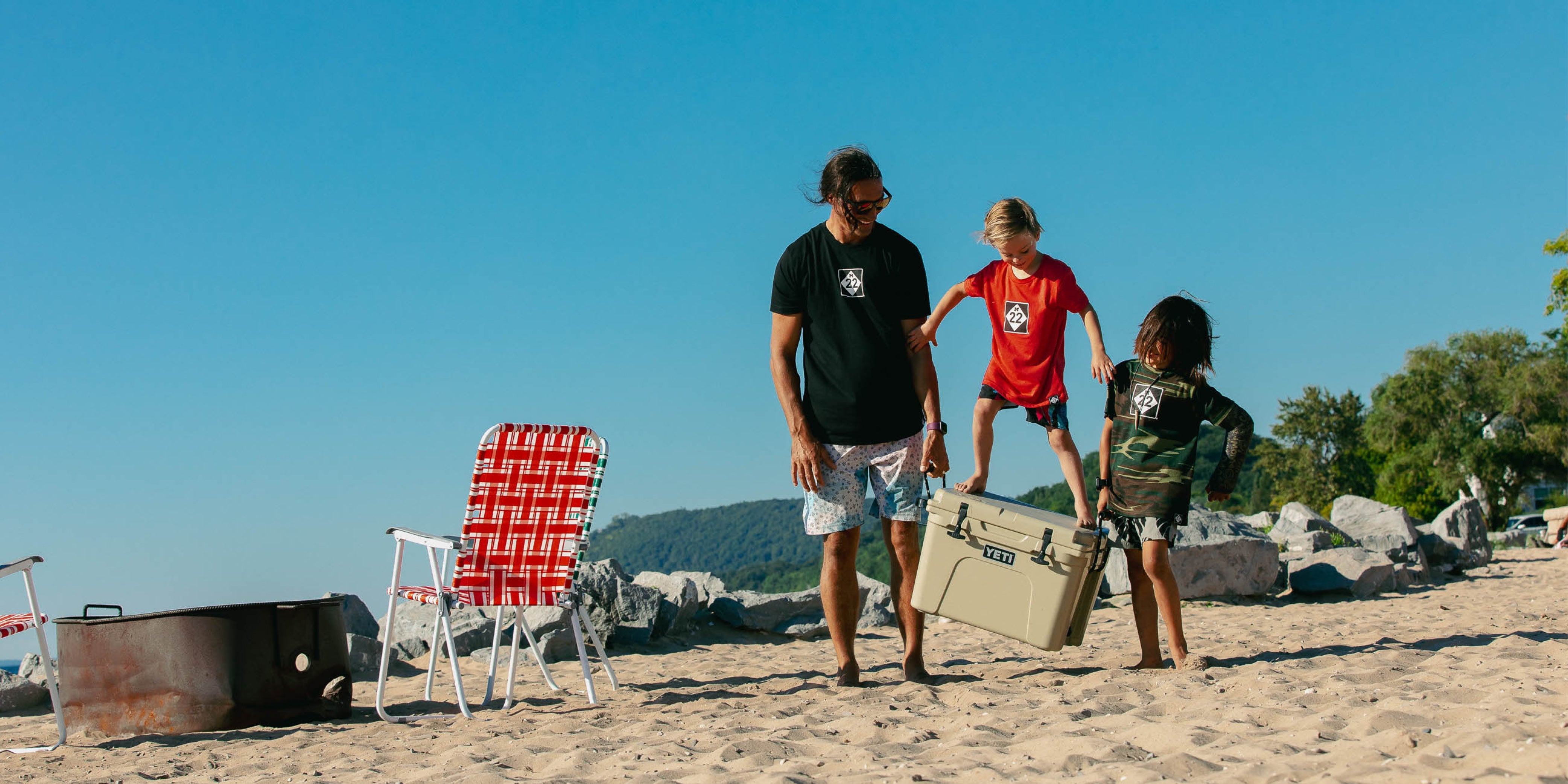
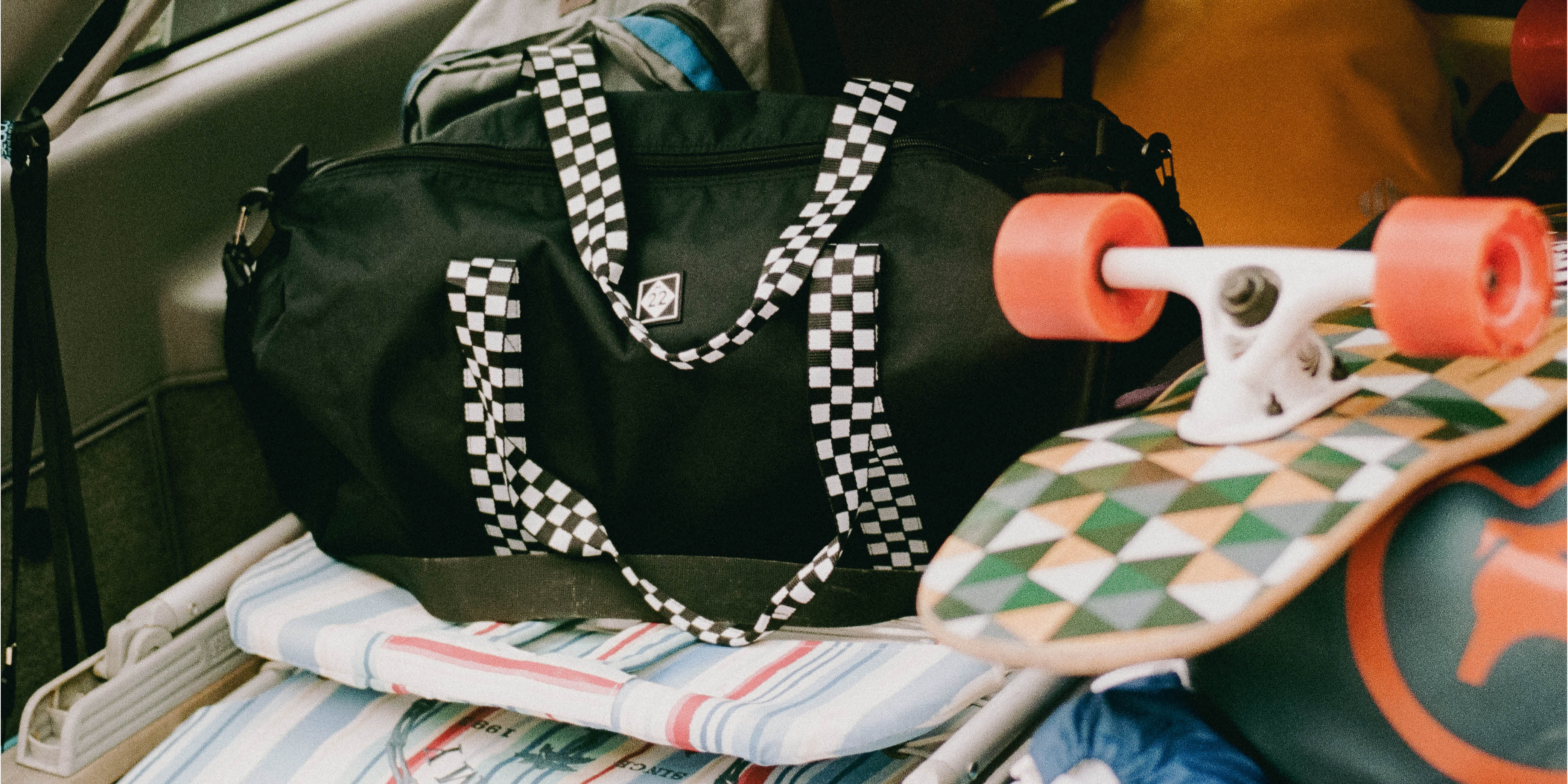
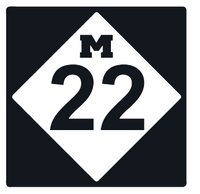

Leave a comment